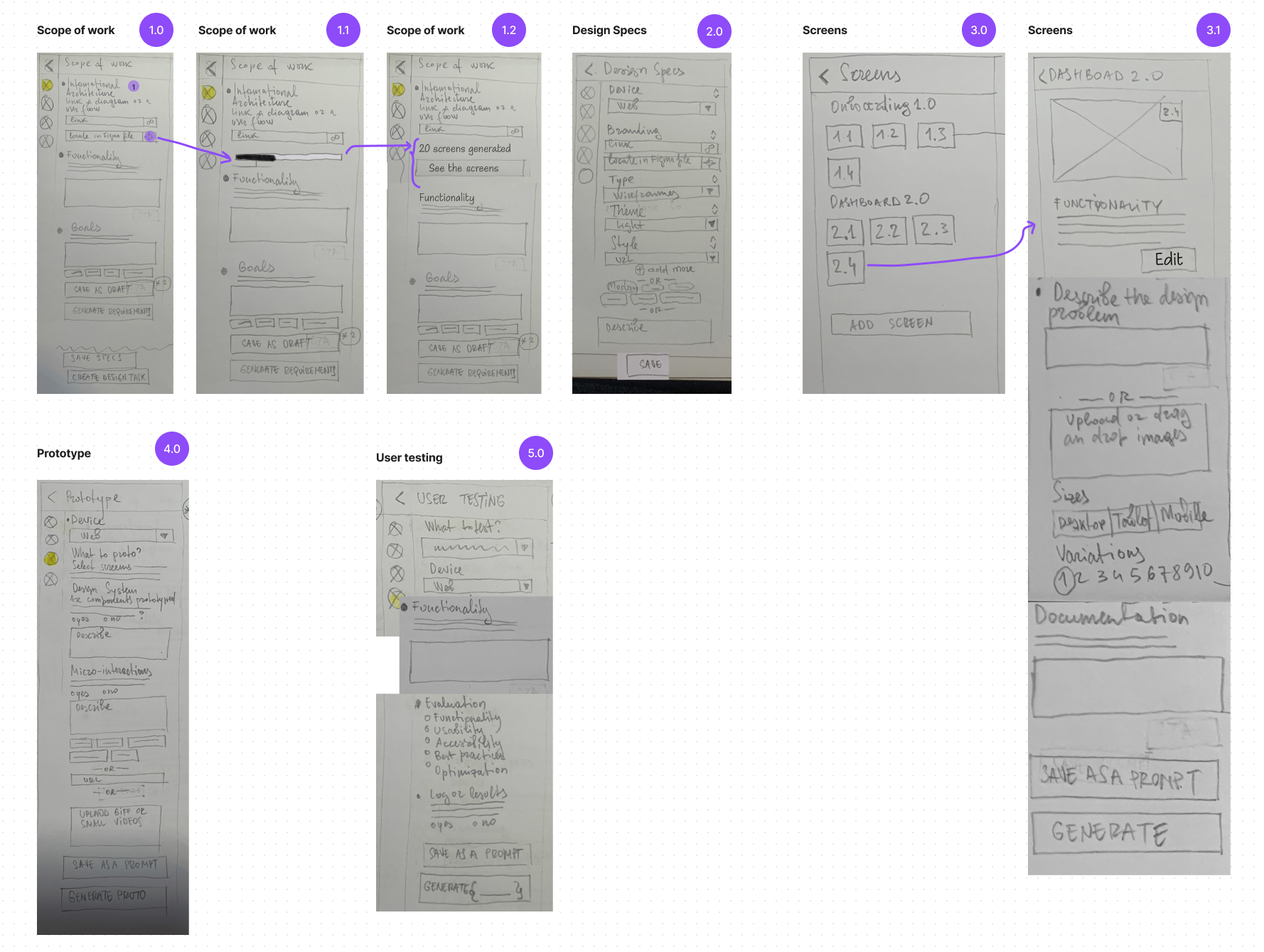The Designer’s Companion Plugin
The Designer’s Companion Plugin
As the design landscape undergoes a remarkable transformation, Large Language Models (LLMs) are no longer a futuristic fantasy but an essential element driving the evolution of product design. My exploration delves into the potential of leveraging LLMs, with a dash of Generative AI, to create a minimum viable product (MVP) for a Figma plugin.

This exercise aims to demonstrate how Language Model Models (LLMs) can considerably improve the UX/UI design process by providing a perfect combination of automation and enhanced creativity. Imagine a plugin that goes beyond being just a simple tool and becomes your personal design assistant.
This exercise aims to demonstrate how Language Model Models (LLMs) can considerably improve the UX/UI design process by providing a perfect combination of automation and enhanced creativity. Imagine a plugin that goes beyond being just a simple tool and becomes your personal design assistant.
The Designer’s Companion Plugin could significantly reduce the time you spend on routine tasks, freeing you to focus on the strategic aspects of design. It wouldn’t stop there. By learning and evolving from past projects, the plugin could offer insightful advisory support, make intelligent suggestions, and automate various aspects of your design workflow. Consider it a complete support system that covers everything, from defining the scope of work and design specifications to developing the design, generating prototypes, and collecting user feedback.
This smooth integration promotes a more innovative and responsive design process, making navigating the design journey easier with greater efficiency and creativity.
The journey from creating design drafts to conducting user testing is a common process among designers, but it can be difficult for them. The repetitive and monotonous tasks involved in the process can sometimes hinder their creative abilities. To address this challenge, the Designer’s Companion plugin was developed. It not only saves time but also enhances creativity by recognizing the designer’s unique style and customizing the experience to their liking.
Unveiling Potential
Building upon the foundation of the plugin’s core concept, let’s explore the potential functionalities that could empower your design process and unleash your creative potential. Remember, this is still a hypothetical exploration, but the possibilities are fascinating.
Design specs and scope of work
Streamlining initial stages
Imagine a world where defining the project roadmap becomes effortless. The Designer’s companion plugin could act as your intelligent guide, assisting you with:
Scope of Work Definition
Information Architecture (IA) Analysis
Nurturing creativity
Design inspiration and problem-solving
As you delve into the design phase, the plugin can evolve into your creative partner, offering:
Design Inspiration
Text-to-Image Generation
Problem-solving Assistance
Effortless Automation
Repetitive tasks and prototyping
The plugin can significantly enhance efficiency by automating tedious and repetitive tasks, allowing you to focus on higher-level design thinking. Imagine:
Automatic UI component generation
Prototyping assistance
Continuous Learning
Gathering and implementing user feedback
The design journey continues after the final prototype. The Designer’s companion plugin can assist you in incorporating valuable user feedback:
User Testing analysis
A/B testing support
Iterative design refinement
These are a few potential glimpses into the functionalities of the hypothetical Designer’s companion plugin. As LLM technology and generative AI capabilities continue to evolve, the possibilities for streamlining and enriching the design process are limitless.
Challenges and Considerations
While the potential benefits of the Designer’s companion plugin are undeniably exciting, it’s crucial to acknowledge the challenges and considerations that need to be addressed for responsible and ethical development and implementation:
Ethical Considerations
Technical Considerations
The Future of Design
Developing the Designer’s companion plugin represents a step towards a future where AI and human designers work collaboratively. This future holds immense potential for:
However, it’s crucial to remember that AI tools like the Designer’s companion plugin do not replace human creativity and ethical considerations. When used responsibly and ethically, they are powerful tools that can significantly enhance the design process and empower designers to create a more user-centered and impactful future.